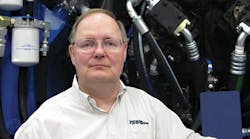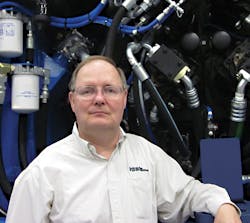If you attend the IFPE Technical Conference, half-day short courses, or the free fluid-
power seminars we’re organizing, you’ll certainly help round out your knowledge of fluid power. But networking with others in the industry can prove just as valuable and a lot more fun. The many social events associated with ConExpo and IFPE make for long days and little sleep.
Aside from the enjoyment of networking with old friends and new, I always like to engage in trivia. I still remember one of the first tidbits I learned at a gathering when I worked for a distributor. I worked in mechanical power transmission then, and I wondered why some pulleys were carried pulleys, while others were called sheaves. It sounded like a very basic question, so I was almost afraid to ask. However, I was still pretty new to the business, so I figured I could play the newbie card to save face. To my surprise, the people I asked did not know the difference. Most of them gave vague answers instead of admitting that they didn’t know.
Then I was talking to a guy who was nearing retirement, and he was happy to help me out. He said a sheave has one or more circumferential grooves, whereas a pulley doesn’t. So a crowned pulley is a pulley, a pulley for a synchronous belt is a pulley, but a pulley for a V-belt is actually a sheave. I hadn’t known that, and maybe you didn’t either.
Once I got involved with fluid power, similar questions arose, such as, “What’s the difference between a hose and a tube?” Naturally, steel or copper tubing is not hose, but what about a length of flexible, nonmetallic material? Hose or tube? I’ve heard a few different accounts, but the one I like best (and that we adhere to at H&P) is that a hose has some sort of reinforcement, whereas a tube does not. So if it’s made of neoprene, or silicone, it’s a tube. But once you reinforce it with nylon or other material, it becomes a hose.
How about pipe and tube? Some people have told me that a pipe is threaded, whereas a tube has to have end fittings attached. This doesn’t wash, because some pipe is welded. My understanding is that pipe is measured by its inside diameter, whereas tube is measured by its outside diameter. That doesn’t really differentiate them, because if I have a hollow cylinder, how do I know if I’m supposed to measure its ID or OD? Maybe I’ll find an answer by networking at IFPE and ConExpo.



